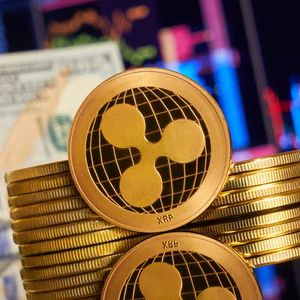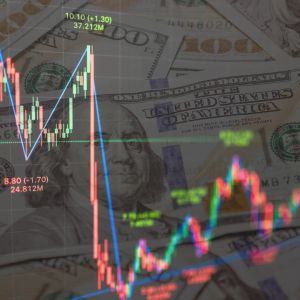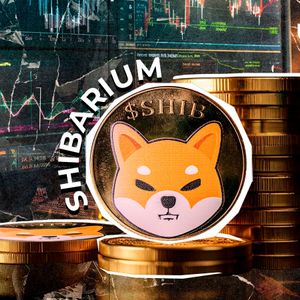Summary XRP exposure is possible in the US via the Teucrium 2x Long Daily XRP ETF, despite the absence of spot ETFs or CEFs for XRP. XXRP uses swaps to provide leveraged XRP exposure, but carries heightened risk and volatility compared to spot products. XRP is already more volatile than other digital assets like Bitcoin or Ethereum. So XXRP is volatility on top of volatility. Long-term investors should use the futures ETF or wait for spot XRP ETFs rather than holding leveraged products like XXRP. In my recent coverage of the Bitwise 10 Crypto Index Fund ETF ( OTC:BITW ) for Seeking Alpha, I made note of how it was becoming increasingly possible to mimic the top holdings of that fund but through allocating to various ETFs and closed-end funds in a traditional a self-directed IRA. At 90% combined allocation between Bitcoin ( BTC-USD ) and Ethereum ( ETH-USD ), spot ETFs are useful tools for self-directing asset weightings. Allocating the 3% exposure to Solana ( SOL-USD ) is also quite easy given the OTC market offers two different closed-end funds as well as a futures-based ETF. 5% of BITW assets are in XRP ( XRP-USD ). Despite the US market lacking spot ETFs or OTC market CEF shares, traders can get exposed to XRP through the Teucrium 2x Long Daily XRP ETF ( XXRP ). In this article, we'll look at Teucrium's fund details, how it allocates XRP exposure, and why speculators with longer term time horizons should wait for spot ETFs rather than sitting in XXRP shares. Fund Details & Objective The objective of the Teucrium 2x Long Daily XRP ETF is very simple; XXRP aims to double the return of XRP on a daily basis. To its credit, Teucrium is very overt about the fact that the fund will ultimately lag the performance of XRP over time. We'll detail that a bit more in the risks section later in this article. Believe it or not, XXRP is not the only 2x leveraged XRP ETF in the market today. In the time since my May 21st BITW article , we have seen a second 2x leveraged XRP fund begin trading, with the Volatility Shares 2x XRP ETF ( XRPT ) launching on May 22nd. Here's a straightforward comparison between the funds: Fund Comparison XXRP XRPT Issuer Teucrium Volatility Shares LLC Inception 04/07/2025 05/22/2025 Expense Ratio 1.89% 0.94% AUM $100.24M $1.70M Source: Seeking Alpha With respect to being first to market, the only real advantage XXRP has over XRPT at this point in time is liquidity. With just over $100 million in AUM against less than $2 million for XRPT, traders will likely have a far easier time executing orders at desirable prices through XXRP if they want to go the leveraged fund route. Since these funds are not to be held for longer than a few days or weeks (at most), the expense ratio likely doesn't matter as much as the liquidity difference. But it is worth pointing out that XXRP is roughly double the price of XRPT, purely by the fees associated with holding the funds. XRP Swaps Since there isn't a spot ETF for XRP yet in the US market, XXRP utilizes swap agreements with global financial institutions that allow Teucrium and its counter-parties to make payments based on XRP reference assets or benchmarks. Those could include the CME CF XRP-Dollar Reference Rate, the CME CF XRP-Dollar Real-Time Index, or a handful of European XRP ETPs that are listed below: 21Shares XRP ETP Bitwise Physical XRP ETP Virtune XRP ETP WisdomTree Physical XRP ETP CoinShares Physical XRP ETP In addition to these 'XRP Swaps,' Teucrium may also hold XRP futures contracts and/or XRP options. But the point is, XXRP doesn't actually provide speculators with direct exposure to XRP. Which is definitely a consideration that US buyers should keep in mind if they want to minimize third-party risk to the degree that they can. That said, for this type of product, that concern is likely minimal. The larger concern is long term decay. 2x Leveraged ETF Risks As is generally the case with every leveraged ETF product in the market today, funds like XXRP are designed for short-term holding rather than long-term investment. For those seeking a tactical trading tool, 2x funds like XXRP can be great. The advantage they have over taking positions with margin is the leveraged funds limit downside. Trading with margin can result in a call to pledge more collateral. However, with leveraged ETFs, a trader can only lose what is put into the position. Furthermore, unlike something like 0DTE options, there is no expiration on leveraged ETF positions. So holding time can be as long as the idea is winning, or the trader has an ability to endure pain. On the latter, Teucrium's prospectus makes it very clear that XXRP is not designed for long-term holding and will ultimately lag the return of XRP if held for too long: The return of the Fund for periods longer than a single day will be the result of its return for each day compounded over the period. The Fund’s returns for periods longer than a single day will very likely differ in amount, and possibly even direction, from the Fund’s stated multiple (2x) times the return of daily changes in the price of XRP for the same period. For periods longer than a single day, the Fund will lose money if XRP’s performance is flat, and it is possible that the Fund will lose money even if the price of XRP increases. As I've said in my numerous articles covering at least a dozen leveraged ETFs prior to this one, it is imperative that entries and exits in these types of products are timed properly. Sustained periods of chop or sideways action will not help XXRP holders. While the trading history for XXRP is admittedly small since inception in early-April, we can already see how sideways action is bad for the fund: Data by YCharts The chart above shows the price performances of XRP and XXRP since April 28th. The price or XRP is roughly flat at 0.79% over the last month, yet XXRP is down nearly 10%. Some of this is due to the added volatility that comes with a 2x leveraged ETF - that volatility is entirely by design. But the volatility is compounded because XRP itself is also highly volatile. XRP Volatility I've covered XRP based on network fundamentals a handful of times for SA and recently updated that view back in April: For me, the chain usage data is actually pretty encouraging. We see transactions up over time, DAAs making highs, and even fees have noticeably increased in recent months. Still, price is well ahead of all of this action. However, even if one holds the view that XRP is a buy based on their own fundamental framework, it's important to keep in mind that any position in XXRP should likely be expressing more of a technical bull setup than a fundamental one. Crypto is already a highly volatile sector of the market, and when you get into the altcoins that volatility can get more intense. Such is the case with XRP. Volatility XRP BTC ETH 30D 0.61 0.35 0.92 90D 1.08 0.54 0.94 1Yr 0.98 0.49 0.73 Source: Messari The table above shows the volatility metrics for XRP, BTC, and ETH over 30 Day, 90 day, and 1 year time frames. In all but one time frame, XRP is more volatile than ETH and XRP is more volatile than BTC in all three time frames shared. Closing Takeaways Essentially, XXRP is volatility on top of volatility. XRP is already a very volatile asset over just about any time frame that you look at. Factor in leverage from a fund like XXRP, and we're talking about a financial product that must be actively managed by the trader who holds it. This is not a product that should be held for longer than a few days, in my view. Thus, timing the buy properly is imperative. For investors who want exposure to XRP without leverage, they can consider the Volatility Shares XRP ETF ( XRPI ) as an alternative. That fund utilizes futures contracts without the leverage to mimic XRP returns and was launched the same day as XRPT.



















